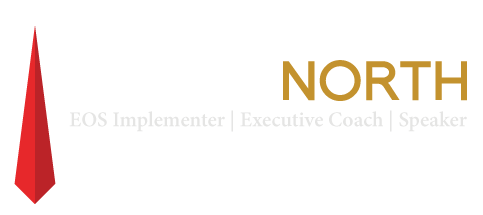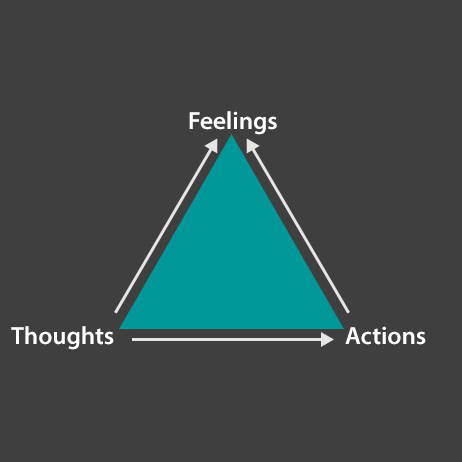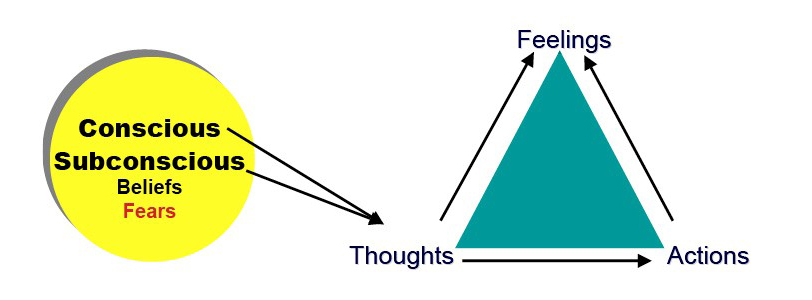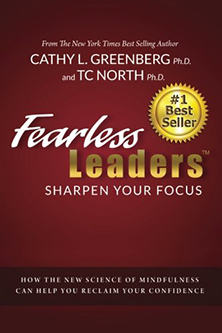Building confidence and exuding executive presence gives you an advantage you don’t have without them.
Everyone wants more self-confidence. To date, 100 percent of the successful entrepreneurs in my audiences, or those who’ve engaged in executive coaching, have wanted more self-confidence in at least some situations. Even the world-champion and Olympic athletes I’ve mentally trained sometimes want more confidence in their sport, and they often want much more self-confidence in other situations.
Most people don’t realize that they can consciously strengthen how much confidence they have, both general self-confidence and task- or situation-specific confidence. You can build both types of confidence with techniques using your mind and body. Both self-confidence and situation-specific confidence are an important aspect of developing executive or leadership presence. This article focuses on how to gain confidence by using both your mind and body to enhance your leadership and executive presence.
What is self-confidence?
Self-confidence originates in your conscious and subconscious beliefs about yourself. It’s a faith in your own abilities and your level of self-trust. Your self-confidence is directly reflected in your thoughts and actions and indirectly in your emotional feelings. Even though self-confidence involves thoughts, actions and emotional feelings, if you are like most people it’s the feeling of self-confidence that you really want.
What self-confidence isn’t.
Self-confidence is not arrogance. Arrogance is an offensive display of perceived superiority often characterized by insecurity. Arrogance is analogous to a little puffer fish puffing himself up to create the illusion of being bigger than he is — it’s a form of self-protection.)
How do you increase the feeling of confidence?
To change the feeling of confidence it’s important to know is that you can’t actually change an emotional feeling directly. To change how much confidence you feel emotionally, you will do it through your thoughts and actions (see Diagram 1).
Diagram 1: Interrelationship of Thoughts, Actions and Feelings
Here’s a summary of Diagram 1:
- You can only have 100 percent direct control of two things in your life, your thoughts and actions.
- Your feelings are the result of what you think and the actions you make, such as body postures.
You only have 100 percent direct control of two things in your life and they aren’t your significant other or boss! They are your thoughts and actions. If you want to change a feeling, you have to change a thought or an action. This can help you focus your time and energy.
As a speaker, you never know what your audience takes away from a presentation and applies in their lives. Here is part of a conversation with Bob, the General Manager of a car dealership four years after I worked with him and his sales team for three months of training and coaching on, ” Selling With Confidence” (they increased sales 26% and net profit over 300%).
TC. “What did you take away from the training and coaching and keep applying?”
Bob. “To focus on my thoughts and actions, because they are the only two things I have 100 percent direct control of in my life”.
TC. “You made my day! It’s the most important take-a-way!”
Bob’s focus helped him become an extraordinary leader.
What is situation-specific confidence and how does it differ from general self-confidence?
Confidence is both general and specific. For example, if you were a highly skilled computer programmer, you’d have a high level of confidence in tackling a new programming challenge. However, if you’ve never been a parent and don’t know much about parenting, the thought of caring for a drooling, puking, crying newborn might strike terror in your soul (it did in mine). In this situation, your fear factor might be high, and your specific parenting confidence extremely low.
The phrase “situation-specific confidence” refers to all confidence specific to a certain task or situation. The term “self-confidence” refers to the general state of thinking, feeling and acting with confidence.
What are the benefits of building confidence?
Before examining how to gain confidence with proven methods, let’s look at some benefits of being confident.
- Performing under pressure. Athletes, musicians and actors will all attest to the importance of a high level of confidence. When you’re confident, you perform up to your potential.
- Being happier. Confident people tend to be happier and more satisfied with their lives than people who lack self-confidence.
- Influencing others. Self-confident people can usually influence others more readily. This is helpful when you want to sell an idea or product or negotiate at work or home.
- Having leadership presence or executive presence. A big part of leadership presence or executive presence is having strong self-confidence. You create your leadership and executive presence by how you think, act (including how you carry your body) and use your voice.
- Exuding a more positive attitude. When you’re confident and feel good about yourself, you believe you have an important and meaningful place in the world, giving you a positive attitude.
- Feeling valued. When you’re confident, you know what you’re good at and that you have value in the world.
- Rising to the top. Looking for a promotion? The more confidence you have, the more likely you are to be promoted.
- Being sexier. Did you know that confidence is sexy? Confidence is high on what women find attractive in men. And for confident men, confidence is sexy in a woman. If you’d like to learn more about this, here is a great article!
- Reducing negative thoughts. Greater self-confidence allows you to experience freedom from self-doubt and negative thoughts about yourself.
- Experiencing more fearlessness and less anxiety. Greater confidence makes you more willing to take smart risks and more able to move outside your normal comfort zone. When you don’t have all the confidence you need, you must rely on your courage. Having great courage allows you to continue building confidence (to better understand the courage and confidence relationship, (please read this article). The courage to fail, in order to succeed, is the most ubiquitous of the 12 Fearless Leaders success secrets in my book.
- Greater freedom from social anxiety. Becoming more comfortable being yourself reduces concern about what others might think of you. How liberating!
- Energy and motivation to take action. Confidence gives you positive energy to take action to achieve your personal and professional goals and dreams. The more highly motivated and energized you are, the more likely you are to take immediate action.
Bottom line: Self-confident people are generally more successful.
Each of the 12 benefits above helps you achieve goals faster and easier, which means you enjoy more success in life. Conversely, lack of confidence means more fear, anxiety and stress usually resulting in less success.
The neuroscience of building confidence using your thoughts?
Before we get into the techniques of building confidence, let’s talk about how your brain builds confidence using your thoughts. All of your confident memories are linked in your brain on neurons in a neural network.
Each time you remember a situation when you were confident, you strengthen your confident neural network. It’s analogous to going to the gym and lifting a weight; you get stronger with each repetition. Remembering a time you were confident is a confident building repetition.
Neuroscience has shown that our brains have both neurogenesis (we can make new neurons) and neuroplasticity (we can strengthen, weaken and change the connections of neurons). Thus, you can form new neurons in your brain at any age, and you can change how the neurons in your brain connect, thus creating new thinking patterns. You can also strengthen the neurons in your brain (they become thicker and make more connections with other neurons, similar to building a muscle).
Because of neurogenesis and neuroplasticity, you can create more self-confidence or more specific confidence in any situation by disciplining your thoughts to me more confident than fearful.
The science of building confidence with your actions – using your body.
Not only can you build self-confidence with your thoughts, you can also build your confidence with your body postures or body poses. The insightful book “Presence” by Harvard professor Amy Cuddy, Ph.D., includes scores of studies on how our bodies affect our emotions. I
It’s a great and enjoyable read that I highly recommend. Cuddy, her colleagues and other researchers found that body postures that enlarge the body increase the release of testosterone (sometimes referred to as the “assertiveness hormone”) and decrease the release of cortisol (referred to as the “stress hormone”). More assertive and less stressed and fearful — a good description of being more self-confident. Below are photos of what Cuddy termed high- and low-power poses.
Diagram 2
There are many more poses, but these illustrate the difference between expansive high-power versus shrunken low-power body postures. Your body language sends a message to those around you and to your brain about how much personal power and confidence you have. You can use these postures, especially when you are by yourself to increase your confidence. Be careful using them in front of others, they may find your power poses intimidating.
The building rock solid confidence technique.
With this science based, proven technique, you’ll experience the double benefit of building confidence with both your mind and your body simultaneously and gain confidence to perform under pressure! You combine strengthening your confidence with both your thoughts and your actions.
It’s relatively simple and with regular practice that strengthens the part of your brain where confidence resides (the confident neural network). The technique works for almost everyone. Start with a 10-day commitment. If you do this precisely as recommended, you should notice a difference in the first 10 days (some people notice it right away). Re-evaluate how it’s working after 10 days. If you notice an improvement, which I believe you will, continue the process of building your confidence.
Make a choice.
Commit to build either general self-confidence or situation-specific confidence in a task or situation. If you choose general self-confidence, use as many diverse memories as possible. If you decide on situation-specific confidence (e.g., speaking to groups, selling or standing up for yourself), select the most precise memories related to that situation. Let’s say you want to express your opinion more confidently; start by recalling times when you’ve spoken up in situations.
If you lack confident memories about that specific situation, remember any time you experienced confidence and imagine having that feeling in a particular future situation in which you want greater confidence. Visualize thinking, acting and feeling with confidence in that exact future situation.
Building rock solid confidence technique:
Day 1: Remember and record being confident.
1. Recall a time you were confident. Maybe it’s something from when you were a child, a teen or an adult. It could concern academics, a social activity, a game, athletics, a hobby — it just has to be something you were confident doing.
2. Record your confident memory. Either electronically or by hand, write about how you thought, acted and felt when your confidence level was high. (There are advantages to handwriting your memories, because the part of your brain used in writing by hand helps strengthen memories.) Be as detailed as you can about how you experience confidence, and be aware of your body as you do. Expand your body, be bigger. Are your elbows out? Are you standing or sitting tall? Take on a high-power posture.
3. Feel your confidence. Think about and read your memory while standing or sitting in a high-power position for at least two or three minutes. Continue until you re-experience the feeling of confidence, even just a little. Some people experience a significant feeling of confidence while recalling a confident memory while others experience just a little. Providing you evoke some of the feeling of confidence, you stimulated the part of your brain that knows how to be confident. Repeatedly doing so strengthens and enlarges your neural network, where confidence resides. And your confident thoughts and high-power body positions will lower stress — a bonus! All of these benefits make this an extremely effective technique.
Day 2: Remember, record and reread.
1. Remember and record and feel a new confident memory (as you did in Day 1). You’ll now have two memories recorded.
2. Review previous written memory. Reread and recollect your first memory. Get in a high-power body posture and experience your confident thoughts until you can recall some of the confident feeling.
Your second confidence workout is complete. You’re consciously training your body and mind to experience more of the thoughts and emotions you want, more confidence.
Days 3 – 10: Remember, record and reread.
1. Repeat the first two steps of Day 1. Remember and record a new memory each day while using the most expansive high-power body posture possible.
2. Feel your confidence. While in a high-power body posture, read and remember all the confident memories you previously recorded. Recall the feeling of confidence with each one. You strengthen your confidence every time you stimulate your body and confident neural network with a confident memory.
Recommit.
If you begin experiencing enhanced confidence and presence, commit to another 10 days. If you continue strengthening your confidence and presence, do a third set of 10 days.
Days 11 – 30: Remember, record and reread.
1. Repeat the first two steps of Day 1. Recall and log a new memory at least three out of every seven days while in a high-power position. If you have trouble recollecting confident memories, think of the things you do well that you don’t usually deem significant confident memories. They could be simple things such as changing a diaper, shaving, driving your car, gardening or doing laundry.
2. Feel your confidence. In a high-power position, preferably standing, reread and remember every day any three confident memories you documented. Evoke the feeling of confidence with each one. Read them slowly and return yourself to the situation where you were confident. It won’t take as much time and effort now to access your confidence because you’ve been training your mind and body. At this point, it’s unnecessary to read, just remember and feel as many past confident moments.
When you consider all the benefits of developing a high degree of greater self-confidence, specific confidence and enhanced presence in the most important areas of your personal and professional lives, isn’t it worth investing some time?
The importance of a committed decision.
All conscious growth begins with a decision followed by action. Decide to do what it takes to build the confidence you want. Then act on it.
This building rock solid confidence technique increases your confidence. Everyone wants more confidence, but only some people want it enough to consciously build it. Will you just want it, or will you build it?
A colleague and amazing woman, Barbara Marx Hubbard, authored a book titled “Conscious Evolution: Awakening the Power of Our Social Potential.” The book explains that people can evolve themselves consciously. When you consciously strengthen your confidence, you’re consciously evolving yourself as a human being.
How cool is that?
What can you become? What will you become?




